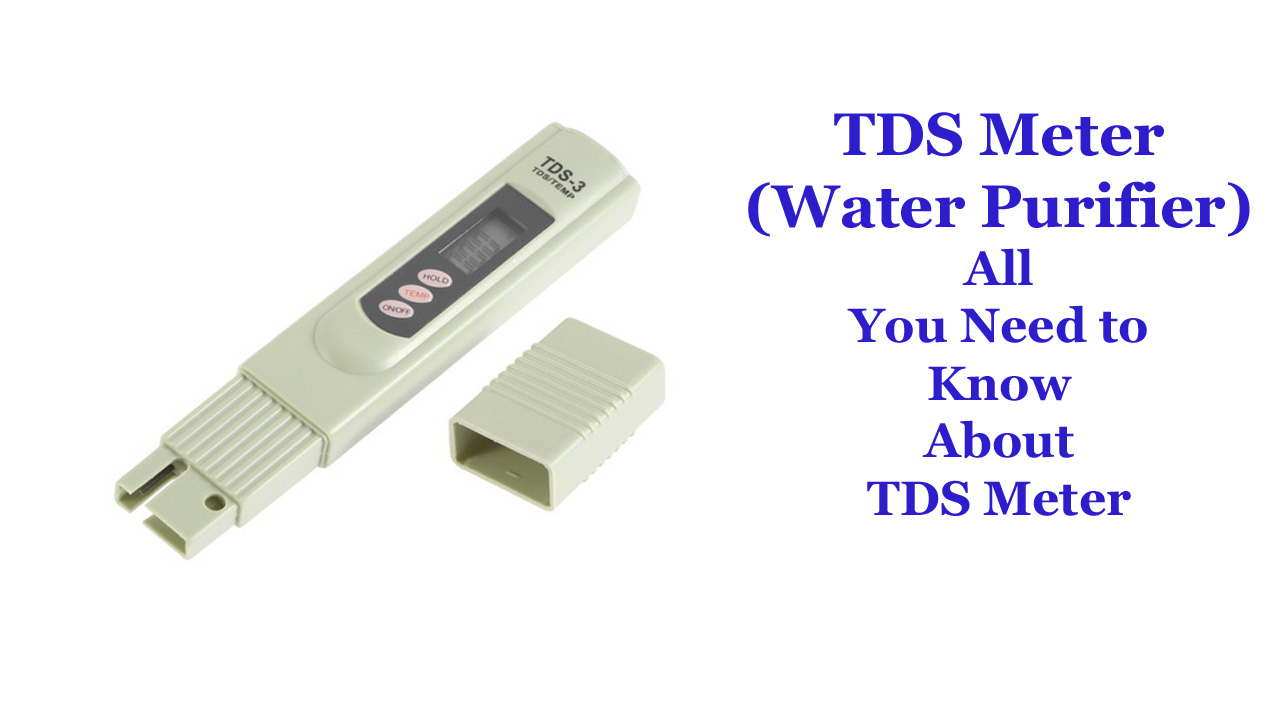Have you heard much about the TDS (total dissolved solids) water purifier? That’s what all the water purifier businesses are talking about; therefore, you must have. That is one of the most talked-about metrics among consumers. But what is TDS, and what is the best TDS water purifier for drinking water? If you’re unsure what the TDS water purifier stands for, you should read this article.
What is TDS (Total Dissolved Solids)?
TDS stands for “Total Dissolved Solids” in drinking water, and it is a measurement of all endogenous compounds dissolved in water. Magnesium, calcium, and potassium are three of the most frequent inorganic elements present in water. The presence of these mineral elements is beneficial to some extent, but it is a reason for concern when it becomes excessive.
What Is the Purpose of Measuring Total Dissolved Solids?
Water testing is a fantastic technique to ensure the quality of the water you get and utilize for various reasons.
TDS levels in water impact the flavour of your drinking water. Depending on dissolved particles in your water, it may taste bitter, salty, or sulfuric.
- Water with a high TDS level is safe to consume. However, some chemicals, such as lead or copper, can, nevertheless, be harmful to one’s health.
- Filter maintenance- A high amount of TDS impacts water filtering systems. Therefore, you should test water purifier devices regularly to ensure that the filters are in excellent operating condition.
- Cooking- While a high TDS level isn’t harmful to your health, it might change the flavour of your meal.
- Cleaning- Water with a high TDS level causes unsightly stains on your kitchenware. This sort of water also stains your clothes and causes a buildup in your sinks, tubs, and faucets.
TDS Chart for Drinking Water
One of the most common concerns that many people have is an acceptable TDS level in the water. Therefore, we’ve included two tables that describe the individual dietary quotient and the permissible TDS level to assist you.
TDS (Total Dissolved Solids) Level in ppm (ppm) Between 50 and 150 on the palatability scale Excellent for drinking 150-250 Excellent for eating 250-300 Poor Above 1200 Fair 300-500 Unacceptable.
Is Water with A Low TDS Level Hazardous to The Human Body?
Because TDS in water is not a measure of any pollutant, many regulatory bodies do not regulate it as a health problem. However, a high TDS level can alter the taste and odour of water. The maximum acceptable amount has been established at 500 milligrams per litre (mg/L) by the US Environmental Protection Agency.
You may use a TDS meter to determine the TDS level in the water. In addition, the total quantity of dissolved solids in water may be determined using a TDS test. It does not, however, identify any specific chemicals or sources. As a result, certain extra tests to detect the pollutants present in water are required.
How to Decrease or Clear TDS from Water
1. Reverse Osmosis (R.O.)
By forcing water across a synthetic membrane under stress, reverse filtration removes TDS. Only molecules with a diameter of fewer than 0.0001 microns may pass through the membrane’s tiny holes. As a result, water squeezes through the barrier, leaving the metals and salts behind because the dissolved metals and salts are larger than the water molecules.
2. The Distillation Process
Boiling water produces water vapour in this process. Water vapour rises to a cold surface and condenses into a liquid state. Because the dissolved salts can’t evaporate, they stay in the boiling solution.
3. Deionization
Water is transported between a positive and negative electrode in this procedure. Thanks to the ion-selective sheets, positive ions can split from the water and flow towards the negative electrode. The ultimate product is high-purity deionized water. However, to remove non-ionic organic pollutants, the water is first put through a reverse osmosis device.
Why Is It Important to Monitor TDS Levels?
There are several reasons you should test the TDS level in your water. Some of the reasons are as trails:
1. Aesthetics And Health
TDS levels beyond a certain threshold change the flavour of water, making it salty, bitter, or metallic. TDS levels over a certain threshold indicate the presence of poisonous minerals that are harmful to one’s health.
2. Hardness
High TDS levels make water hard, causing scale buildup in pipes, dry hair, stains on utensils, and inefficient kitchen equipment. Checking the TDS level in your water might help you prevent these issues in the future.
3. Spas And Pools
To avoid any maintenance issues, pools and spas must continually monitor the TDS level in the water.
When dealing with high TDS levels in the water, installing the proper water purifier can assist. Installing a KENT RO water purifier can help you keep track of the TDS level and ensure that you’re drinking safe water. KENT’s RO water purifiers also use a TDS controller. Learn more about the KENT water purifiers and take home the one that best suits your needs.
TDS in Drinking Water – FAQs
Is A High TDS Level Always a Sign That the Water Is Unsafe to Drink?
Remember that a high TDS does not always imply that the water is hazardous to drink. It can also indicate an unusual flavour, colour, or fragrance. TDS levels in drinking water should ideally be less than 300 mg/litre, with a maximum of 500 mg/litre deemed safe. However, it should not be less than 100 mg/litre for optimal health.
How are TDS Levels in Drinking Water Reduced?
Water purifiers utilizing reverse osmosis (RO) technology are an excellent way to lower excessive TDS levels in the water. These purifiers employ cutting-edge technologies to reduce TDs in freshwater and ensure that the freshwater is fine to consume. If you’re thinking about buying one, have a look at the latest RO water purifiers.
You may also use a TDS meter to evaluate the lifetime and performance of the RO membrane and, if necessary, replace it.


Ꮪuperb post bᥙt I was wanting to know if ʏou could write a
litte more on this subject? I’d be very thankful if
you could elaborate a little bit more. Kudos!